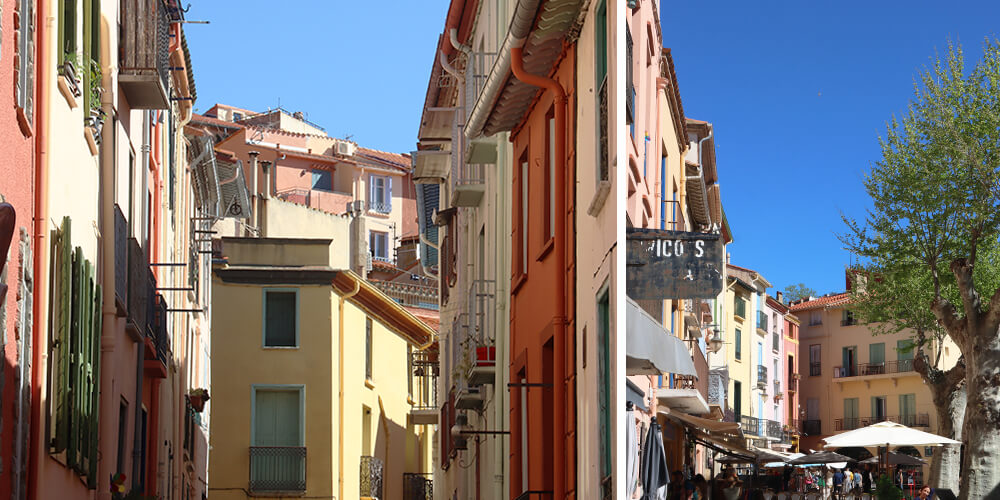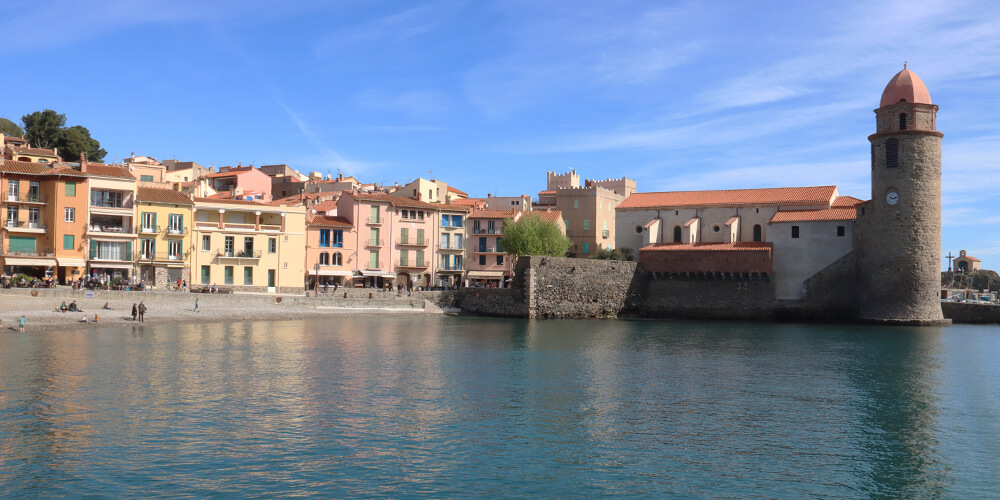
Collioure is located in the far south of France and is the fourth village before the Spanish border, after Port-Vendres, Banyuls-sur-Mer and Cerbère. Romantically set on the Côte Vermeille in the Pyrenées-Orientales department, the pretty seaside resort was and still is an inspiration to many artists. And being the warmest region of France, with about 300 days of sunshine a year, life is pretty good here. Many people share this opinion, especially in July and August when the village is bursting at the seams.
Le Faubourg
Since ancient times, Collioure has been an important port on the Mediterranean. It used to be divided into two villages: Port d’Avall, also known as Le Faubourg, and Port d’Amont, or Le Mouré. The river Douy separated these two villages. I loved strolling around both parts. As the family and I stayed in an Airbnb in the Faubourg neighbourhood, this is where we started our expedition. This quarter used to be the home of seafarers and fishermen. Most inhabitants were traditionally protestant, unlike the catholic Le Mouré district. At the beginning of the 20th century, Le Faubourg was also the place where you would find one of the many anchovy salting workshops. From the Royal Castle- the Château Royal- you have a fabulous view over the bay and the Port d’Avall beach.
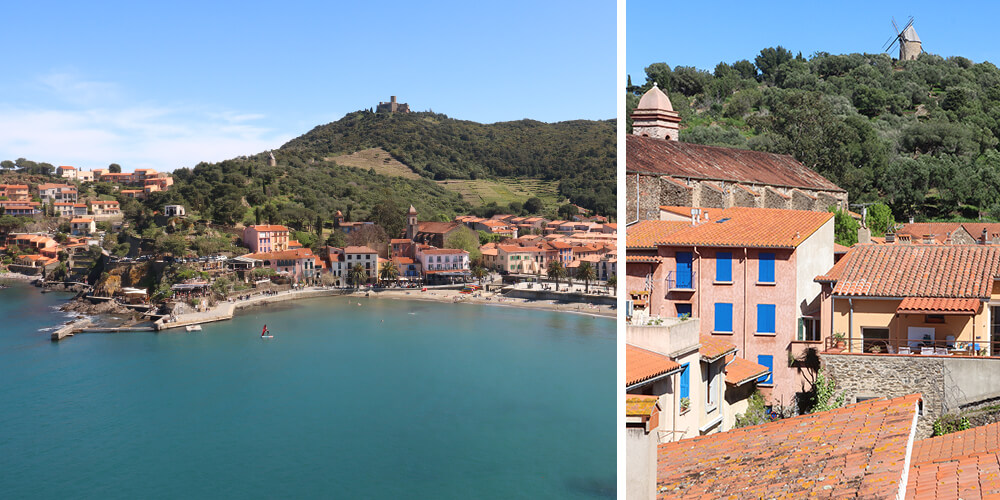
Château Royal
Via the Château Royal, we walked into the centre of the village. Besides the bell tower, this once royal castle is also a characteristic landmark of Collioure. The castle is already mentioned as early as 673 during the occupation of King Wamba, King of the Visigoths. In the centuries that followed, Romans, Barbarians, Arabs, Spaniards and French occupied Collioure. Until 1659, when Collioure definitively became French, adding the Roussillon region to France through the Treaty of the Pyrenees. Parts of the castle are medieval, however architect Vauban reinforced the structures in the 17th century. Quite radically, as the old village within the ramparts was destroyed to do so. Nowadays, the impressive castle is still the centre of the town, overlooking the Ansa de Baleta bay. It’s well worth a visit; I will write about it in another post.
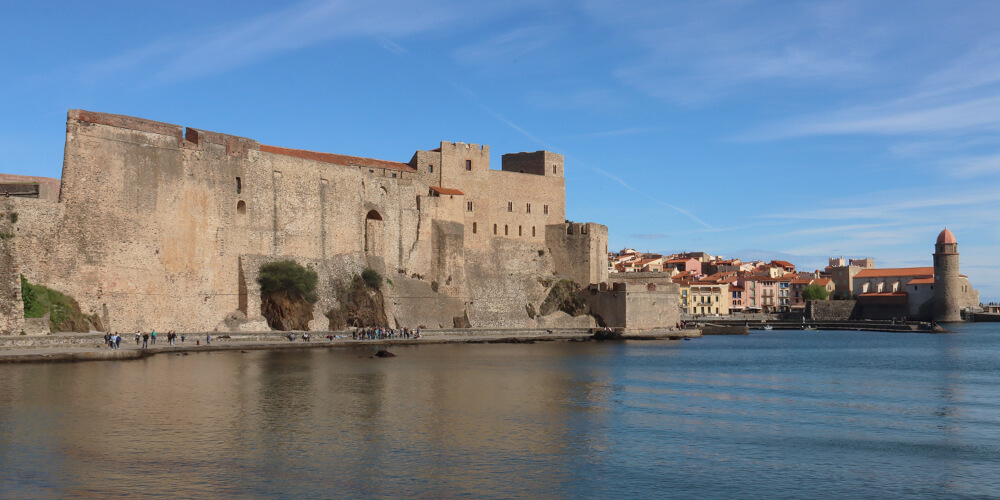
Round Bell Tower
Walking around the castle brought the family and me to the other side of the bay, to the port and the beach of Collioure. And there, you cannot miss the village’s symbol: the round bell tower. It is part of the Notre Dame des Anges church, dating from the 17th century. Chéri, the kids and I walked around the church as far as the lighthouse- the Phare de Collioure- from where we had another beautiful panorama. At the end of the bay, we found the little Saint Vincent chapel. According to the legend, Saint-Vincent was martyred on this very rock. From here, you can admire the coastline with the colourful houses lined up on the cliffs. No wonder a large number of artists, including Picasso, Derain, Braque and Dufy, discovered Collioure in the 20th century. According to Matisse, the sky is nowhere as blue as in Collioure.
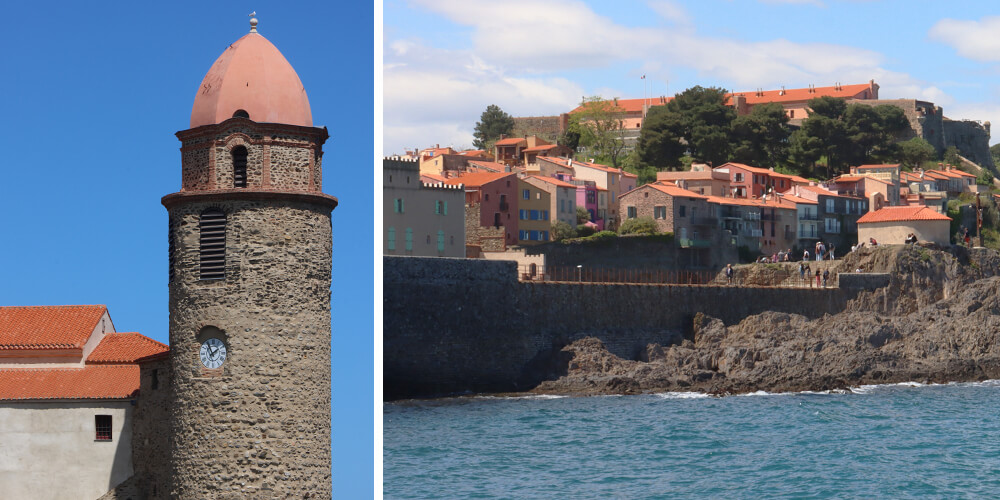
Le Mouré
The family and I found many restaurants and boutiques in the area around the bell tower, which must have been the Le Mouré neighbourhood. Apparently, you can walk the ‘Chemin du Fauvisme’ and learn more about the art produced by Henri Matisse and André Derain in the summer of 1905. Even now the village has an artistic atmosphere with many galleries and art shops. We just let the picturesque streets with the pastel-coloured facades lead us through this charming part of the centre. After our relaxing Saturday, Sunday morning came. And Sunday morning means market day. But that’s going to be another post. As you can see, Collioure has many reasons to visit. If you can, try to spend a night at Collioure. It is truly magical to sit on the beach at night with the beautifully lit bell tower in the background.
